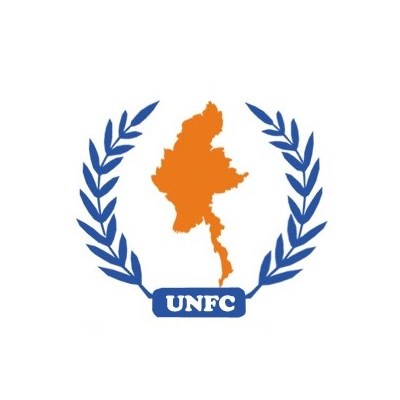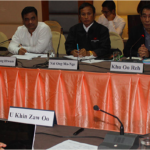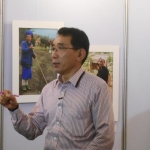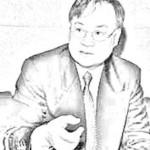Foreword
Burma/Myanmar, after receiving independence on January 4, 1948 from the British colonialists in accordance with the Panlong Agreement, was accompanied by the civil war. Since the rulers of successive eras have tried to end the civil war, in disregard of the Panlong Agreement, they have not met with any success, up to this day, and people of all the nationalities have to continue to suffer the malicious caprices and dreadful consequences of war. In renunciation of such underlying political causes, the ruling dictators are still using force to resolve the political problem, by military means.
In post 2010 election period, the Thein Sein USDP government, saying that it would hold a political dialogue, made overture for ceasefire. The various ethnic armed resistance organizations cautiously accepted the overture.
UNFC-UPWC Talks
On August 18, 2011, U Thein Sein government made overture for peace talks, with the indication of taking steps from ceasefire to political dialogue. As the government armed forces were intruding into ethnic areas and launching offensives, the UNFC in 2011, responded several times with the request to U Thein Sein government to declare nationwide ceasefire and hold talks with the UNFC. At the same time, the UNFC welcome an open letter of the people’s leader, Daw Aung San Suu Kyi, dated July 28, 2011, urging both sides to resolve the problem of civil war by peaceful means, without using force, and the UNFC replied on August 5, 2011, for finding solution through political dialogue.
However, U Thein Sein government’s Union Peace-making Work Committee (UPWC) met only with individual organizations and, in the years 2011-2012, enter into ceasefire agreements with individual organizations, designated as state-level and union-level agreements. Those bilateral ceasefire agreements with the Ethnic Armed Resistance Organizations (EAROs), which were not in the process of fighting as well as those which were in the process of fighting. However, clashes continued to occur even though the ceasefire agreements have been signed.
After 2012, the UPWC started to come and meet with UNFC informally. In February, 2013, the UNFC and UPWC started to hold, in Chiangmai, preliminary political discussions on Framework for Political Dialogue.
From then on, the technical assistance groups of the two sides held informal meetings for about four times.
The second meeting on Framework for Political Dialogue was held in September, 2013 again in Chiangmai, Thailand. In the second meeting, representatives of the non-UNFC members were invited to attend the meeting, on the principle of UNFC. In the arrangement, the Arakan Liberation Party was invited as joint delegation member of the UNFC and representatives of the All-Burma Students Democratic Federation was invited as observers. In addition, broad-based political parties inside the country, the two main ethnic alliance parties, which were the 1990 election-winning political party alliance, being the United Nationalities Alliance (UNA), and the 2010 election-winning political party alliance, being the National Brotherhood Federation (NBF) – two representatives from each of the alliance were invited to attend the meetings as observers. In order to be of assistance in future political dialogue process, Daw Aung San Suu Kyi was also invited, as a leader of the democratic movement of Burma, to attend the meetings as an observer. However, Daw Aung San Suu Kyi and representatives from the NBF were not able to attend the meetings.
At the second preliminary political dialogue meeting, the UPWC demanded again the signing of ceasefire agreement, in advance. The UNFC, according to its stand, made the counter proposal of signing the ceasefire agreement only at the stage when the talks were to advance to the political dialogue, as the majority of the ethnic organizations had signed the ceasefire agreements, at the state as well as at the union levels. The question had to be raised as to what kind of ceasefire agreement had to be signed by the ethnic organizations, which had signed the agreement at the state and union levels. Answer from the UPWC side was ‘to reaffirm the agreements, signed at the state and union levels, and to add two more terms. The two more terms were: –
1. To draft Framework for Political Dialogue;
2. To hold political conference.
As the consultations did not progress well, the UPWC side ended the consultation process by saying that it had come to meet, in accordance with its promise made at the first meeting, and to receive just the UNFC proposed framework.
NCCT – UPWC Talk Process
The ethnic armed resistance organizations continued to find means and ways for gathering and holding a conference at the KIO Headquarters in Laiza, from the end of October to the beginning of November 2013. Subsequently, the Laiza Agreement was formulated for approaching the various steps of political dialogue process, after reaching the ceasefire agreement demanded by U Thein Sein government. In order to implement that agreement, the Nationwide Ceasefire Coordination Team (NCCT) had to be formed. On the basis of equality among the ethnic nationalities, the NCCT was formed with 16 members, one representative from each of the 16 organizations, as shown below.
NCCT Member Organizations
1. Kachin Independence Organization (KIO)
2. Karen National Union (KNU)
3. Karenni National Progressive Party (KNPP)
4. New Mon State Party (NMSP)
5. Shan State Progress Party (SSPP)
6. Chin National Front (CNF)
7. Pa-oh National Liberation organization (PNLO)
8. Palaung State Liberation Front (PSLF)
9. Democratic Karen Benevolent Army (DKBA)
10. Karen National Union (KNU Peace Council (K-PC)
11. Arakan Liberation Party (ALP)
12. Arakan National Council (ANC)
13. Arakan Army (AA)
14. Lahu Democratic Union (LDU)
15. Wa National Organization (WNO)
16. Myanmar National Democratic Alliance Army (MNDAA)
Based on the Laiza Agreement, launched on November 4, 2013 in Myitkyina, Kachin State, the NCCT was able to hold talks with the UPWC. At the first NCCT-UPWC Myitkyina talk, the military representatives produced an agreement prepared by them in advance, as a secret card, and proposed for it. That draft was a combination of some of the terms, acceptable to them, from the Framework for Political Dialogue prepared by the Ethnic Armed Resistance Organizations (EAROs) and the terms desired by them. As the NCCT had to transform the 11-point Liza Agreement into the form of a pact, the Myitkyina meeting was ended with an agreement to hold a consultation meeting once more, in the future.
Subsequently, from January 20 to 25, 2014, the first Lawkheela Conference of the EAROs was held in the KNU administered area and the NCCT’s draft counter proposal, in the form of a pact, was formulated and adopted. The draft pact was a preparation made by combining terms taken out from the Framework for Political Dialogue, which had been formulated to a certain extent, and terms relating to military matters. On January 29, 2014, the group led by U Aung Min from the UPWC came to Chiangmai and officially accepted that draft. Later, as there was a complaint that the text of pact was inflated and too thick, and a proposal was made for transforming the draft into a compact form, a consultation meeting had to be held again. In the continuation of the consultations, stands of the two sides became hardened increasingly in regard of “Their Version, Our Version”, and as the likelihood of deadlock was foreseen, the two sides strived on after laying down the position of having only one version. In this way the idea of a “Single Text” emerged and the two sides continued to march on. As the UPWC accepted the idea, the NCA Single
However, in the consultation to iron out the draft, it was no plain sailing. Due to the existence of military offensives by one side on the ground during the talks, doubts and mistrust between the two sides had become stumbling blocks for going forward. In addition to the doubts and mistrusts, the failure to abide by the bilateral agreements made things impossible to take steps towards the nationwide ceasefire agreement, up to this day.
Owing to the said fundamental reasons, the original positions of the UNFC were – (1) To hold talks in a neutral country; (2) To negotiate with participation of the international mediators from third countries. However, as the government side had continually rejected the proposal, the UNFC laid down anew the position to go and hold talks inside the country.
Though the NCCT-UPWC held official talks for up to the seventh time, in a period of over one year, the NCA could not be concluded. Accordingly, Lawkheela summit conference had to be held again, in June 2015, and laid down the positions of continuing the endeavor with the Senior Delegation (SD) and to sign the NCA, only when all the NCCT members were allowed to sign it. The composition of SD was as follows.
SD Member Organizations
1. Kachin Independence Organization (KIO)
2. Karen National Union (KNU)
3. Karenni National Progressive Party (KNPP)
4. New Mon State Party (NMSP)
5. Shan State Progress Party (SSPP)
6. Chin National Front (CNF)
7. Pa-oh National Liberation Organization (PNLO)
8. Palaung State Liberation Front (PSLF)
9. Democratic Karen Benevolent Army (DKBA)
10. Karen National Union (Peace Council)(K-PC)
11. Arakan Liberation Party (ALP)
12. Arakan National Council (ANC)
13. Arakan Army (AA)
14. Lahu Democratic Union (LDU)
15. Wa National Organization (WNO)
16. Myanmar National Democratic Alliance Army (MNDAA)
17. All-Burma Students Democratic Front (ABSDF)
SD-UPWC meeting had to be held two times and the 9th meeting for talks on NCA was held and the NCA draft had to be concluded in an immature form, on August 7, 2015.
The NCA consists of 33 Articles. Article 33 concerns the section on the signatories, but it was left out as an exception, as if it had nothing to do with the agreement, and the government adopted it in a rush. In the section on the signatories, the government did not accept the 6 organizations mentioned below.
1. Arakan National Council (ANC)
2. Arakan Army (AA)
3. Lahu Democratic Union (LDU)
4. Wa National Organization (WNO)
5. Myanmar National Democratic Alliance Army (MNDAA)
6. Palaung State Liberation Front (PSLF)
However, it was the stand of the EAROs that the NCA become adopted only when all the articles in the NCA were agreed upon. In July and August of 2015, the meetings of top leaders of the EAO was called and decision was made to meet directly with the President and Chief of the Defense Services (Commander-in-Chief of the Armed Forces) and find the means and ways for having all-inclusiveness. The means and ways were, giving full guarantees relating to military, political and social matters, to those, who were not allowed to sign the NCA.
On September 9, 2015, three SD leaders went to Naypyidaw, together with five top leaders, for consultation. However, they had no opportunity to meet with Chief of the Defense Services. They had the opportunity to meet only with the President and they received no clear-cut answer with regard to the guarantees they asked for the 6 NCCT members, whom the government had not recognized.
After that, the meeting of EAO top leaders was held again in September 2015, and position with regard to signing or not signing the NCA was considered and adopted. The UNFC decided to continue holding the principle of all-inclusiveness, adopted by the Laiza and Lawkheela conferences and meetings of the top leaders. However, organizations desiring to sign the NCA deviated from decisions for all-inclusiveness laid down by the Laiza and Lawkheela conferences, and made the resolution of signing the NCA, according to the decision of each individual organization.
Conclusion
Hence, the result of today is an NCA signed between the 8 EAOs and the government on November 8, 2015. It is not also in accordance with Article (2-D) of the NCA, requiring the signing by all, in concert, and the essence of NCA has become spoilt. So long as all-inclusiveness is not realized, the Framework for Political Dialogue and the so-called Union Peace Conference, emanating from it will still be lacking any essence.
Launching military offensives on the one hand and holding peace talks on the other is not the way to bring genuine, just and honorable peace. Under these circumstances, just as the democracy cannot flourish, a genuine federal union cannot be established.
—————————-







